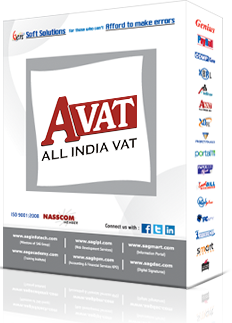VAT (Value Added Tax) - The value-added tax is levied on the sales of goods. In the VAT where a seller sells its goods to the customer's VAT liabilities will levy on him. One can take the benefit of the input tax credit if he/she already paid tax on purchases. The central government has introduced a new GST Act to replace VAT and other taxes in India from 1st July 2017. Here, taxpayers can read the differences between GST and VAT for deep understanding.
To make your taxation simpler, you can go with our software named All India VAT. It is an innovative software that will make your task simpler and easier. It is the best solution under the one roof, such as this software automatically calculates the amount of tax according the States.
Features of Value Added Tax
- The VAT is an Indirect Taxation that is collected on every type of sale.
- The VAT is levied on goods and services, which is provided by the sellers on the value of products.
- The 15 percent VAT is applicable on the Goods and Services
Features of All India VAT Software
- Generation of Online/Offline VAT & CST Registration.
- VAT/CST returns (online/offline)
- Entry Tax Returns (online/offline)
- It is applicable in 24 states only
- Department forms, e.g C form, D Form, E1/E2 Form, H Form
- Data import from tally (M. S Excel Sheet, Busy Sheet)
- Generates an MIS report (Registration/ Return)
- Data can import from excel sheet and for the Chattisgarh, the data can import in XML form
- Defined the client list with their master data.



Comments
Post a Comment